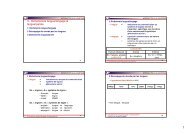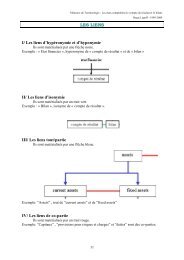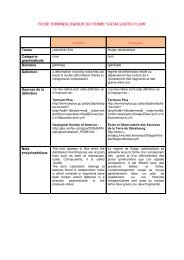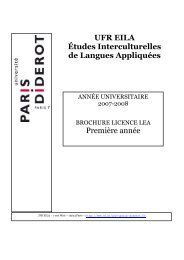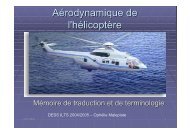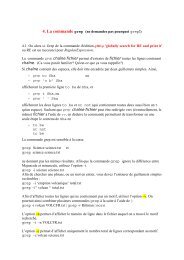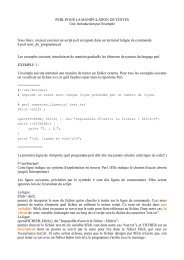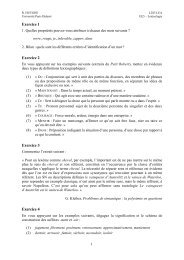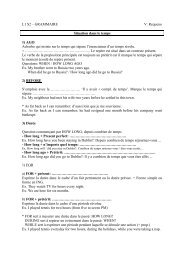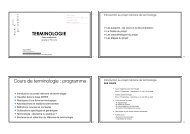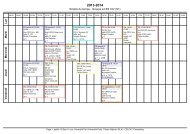INTRODUCTION TO ENGLISH TEXT LINGUISTICS
INTRODUCTION TO ENGLISH TEXT LINGUISTICS
INTRODUCTION TO ENGLISH TEXT LINGUISTICS
You also want an ePaper? Increase the reach of your titles
YUMPU automatically turns print PDFs into web optimized ePapers that Google loves.
Professor Christopher Gledhill<br />
(Notes de cours, Linguistique du texte anglais, 48LGAN23, EILA, Université Paris Diderot)<br />
APPENDIX 1: PROJECT ASSIGNMENT<br />
Project requirements<br />
You are asked to find a specialised text in English and its translation in French. Yoy are then asked<br />
to analyse the text (see the ‘five points you must cover’, below). You are free to choose any kind of<br />
text, as long as it is specialised (see chapter 5) and approximately 300 words in length (you may of<br />
course choose an extract from a longer text). You must use a professional, published translation<br />
and give the proper reference for your source (for examples, see the Bibliography in Appendix 2).<br />
Here are some examples of genres that students have analysed in the past:<br />
• Hair styler manuals<br />
• Espresso machines instructions<br />
• FBI most-wantedposters<br />
• Coffee machine instruction manuals<br />
• Cell phone manuals<br />
• Anthropology research articles<br />
• European Court of Human Rights Judgments.<br />
• Music sequencer software user manuals<br />
• Computer Printer manuals<br />
• DVD Player manuals.<br />
• etc.<br />
Here are two texts which fit the critera:<br />
Texte A.<br />
Domestication du blé, quand l'évolution des gènes fait bien les choses.<br />
La culture moderne du blé est essentiellement basée sur deux espèces, le blé tendre (Triticum<br />
aestivum) ou froment, utilisé pour le pain, et le blé dur (Triticum turgidum durum), utilisé pour la<br />
fabrication des pâtes alimentaires et des semoules (couscous, boulghour). Ce dernier, moins<br />
résistant au froid que le blé tendre, tolère bien la sécheresse. Il est cultivé surtout en Italie, en<br />
Australie, en Russie, en Afrique du Nord, en Éthiopie et en Amérique. La différence essentielle<br />
entre les deux espèces se situe au niveau de leur génome, le blé dur étant tétraploïde, tandis que<br />
le blé tendre est hexaploïde.<br />
Petite explication : chez l'homme et la plupart des animaux, les cellules contiennent dans leur<br />
noyau deux copies de chaque chromosome (à l'exception des chromosomes sexuels). Ces êtres<br />
vivants sont dits « diploïdes ». Ainsi, l'homme possède 22 paires de chromosomes « jumeaux » et<br />
33 / 37




